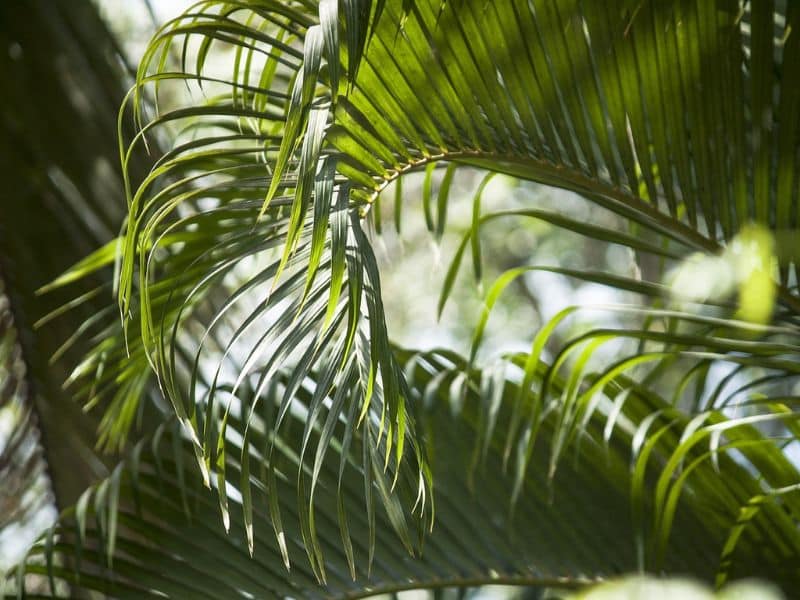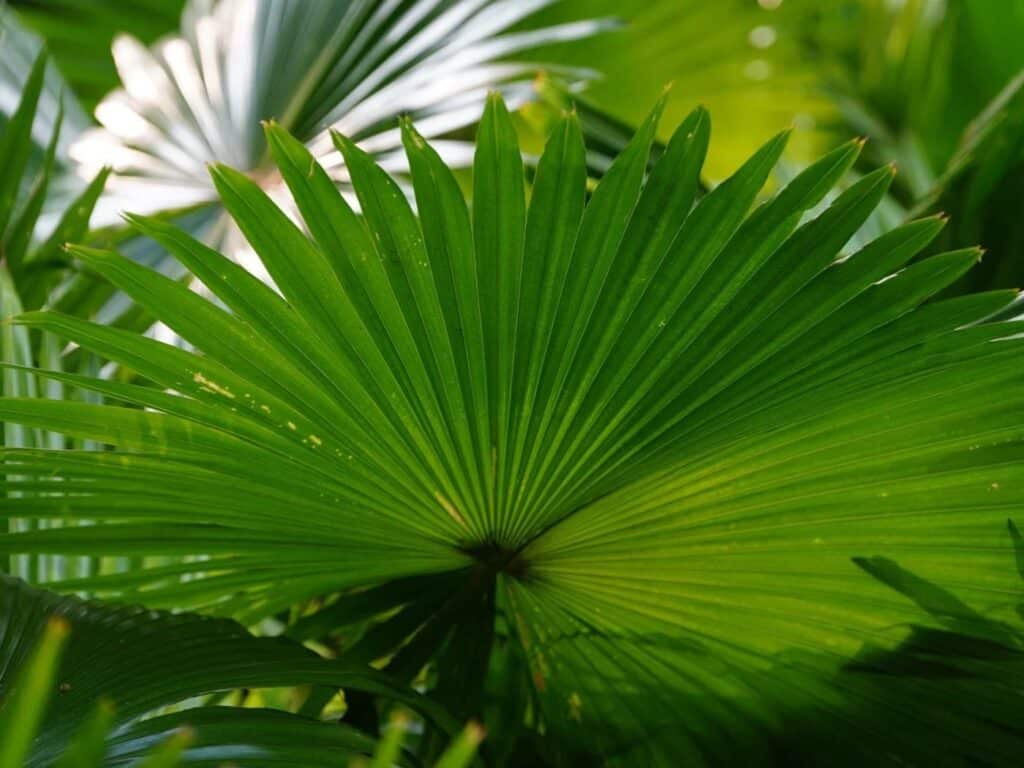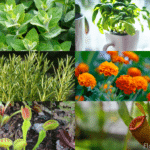You’re strolling through your garden, coffee in hand, when you notice something amiss. Your once vibrant palm tree is now sporting yellow leaves. It’s a common issue that many garden enthusiasts face, but what’s causing it?
Is it a sign of disease, or could it be a natural part of the tree’s life cycle? If you’re scratching your head over this, you’re not alone. This article will delve into the reasons behind your palm tree’s sudden color change, and offer solutions to get it back to its lush, green self. So, let’s unravel this botanical mystery together, shall we?
Understanding Palm Tree Leaves Turning Yellow
The Role of Nutrient Deficiency
Nutrient deficiencies contribute significantly in palm tree leaves turning yellow. Most often, yellow leaves indicate a lack of essential nutrients such as magnesium, potassium, or iron. For example, magnesium deficiency first appears as yellow bands along the leaf margins, while potassium deficiency shows as orange-yellow spots near the tips.
The Impact of Watering Practices
Notably, watering practices govern the health of palm trees. Overwatering and underwatering both lead to yellow leaves, albeit with distinct characteristics. Overwatered palms typically exhibit drooping, yellow leaves with brown tips, while underwatered palms display yellowing at the leaf tips, spreading to the entire leaf if neglected.
Recognizing Diseases and Pests
Diseases and pests pose serious threats to palm tree health, often leading to yellow leaves. Common diseases, such as ganoderma, target the root or trunk, initially turning leaves yellow before progressing to cause wilting. Pests, like the palm weevil, initially cause yellow spots on the leaves, that could turn the entire leaf yellow, if not promptly addressed.
Key Factors Affecting Palm Tree Health

The health of your palm tree relies heavily on a handful of interconnected elements. Let’s delve deeper into two of them: soil conditions with pH levels and sunlight exposure along with climate considerations.
Soil Conditions and pH Levels
Apart from nutrient uptake, soil conditions play a considerable role in maintaining your palm tree’s health, particularly via pH levels. Soil pH affects nutrient availability, directly impacting palm trees’ ability to absorb vital nutrients.
For example, a high pH (alkaline soil) may limit your palm’s ability to access micronutrients like manganese and iron, leading to yellowing leaves—a syndrome known as chlorosis. Conversely, extremely low pH (acidic soil) correspondingly hinders macronutrient absorption. Your palm tree thrives best in mildly acidic to mildly alkaline soil, with pH levels ranging from 6.0 to 7.5.
Sunlight Exposure and Climate
Sunlight and climate factors also greatly influence palm tree health. Palm trees, depending on their species, may require a specific range of light and temperature for optimum growth.
For example, note that insufficient light may well result in a palm tree’s leaves turning pale or yellow. While excessive sunlight or extreme temperatures could incite sunburn or heat stress, causing leaf discoloration, scorching, and potential drying of leaves.
Remember, each palm species has its own sunlight and climate preference. Therefore, when you’re planting a new palm or considering a relocation, be mindful of the tree’s sunlight and temperature requirements.
Preventative Measures and Solutions
Proper care of palm trees involves a series of proactive and responsive actions. From specific fertilization techniques to pest management practices, you’ll learn how to ensure healthy and vibrant palm tree leaves.
Proper Fertilization Techniques
Understanding the nutritional needs of a palm is critical. Just as you require a balanced diet for optimal health, so does your palm tree.
Palm-specific fertilizers often supply the needed nutrients including trace minerals such as manganese, magnesium, and iron. Regular application of these can help prevent yellowing leaves, which is a common sign of nutrient deficiencies.
For example, you may well incorporate a slow-release, granular palm fertilizer with an 8-2-12-4mg ratio into your tree care routine. That’s 8% Nitrogen, 2% Phosphorus, 12% Potassium, and 4mg of Magnesium.
Ideal Watering Schedules for Palms
When it comes to watering palm trees, balance is key. Overwatering can lead to root rot while underwatering may cause dryness and stress.
For most palms, water deeply three to four times a week during hot, dry weather and reduce watering during rainy seasons or cooler months. It’s all about matching the watering schedule to the specific weather and soil conditions of your region.
Integrated Pest Management
The appearance of yellow leaves on your palm tree may be the sign of a bigger pest issue. Integrated Pest Management (IPM) is a beneficial approach to tackling this problem.
It consists of routine inspection, tracking changes, identifying potential pest threats, and using appropriate treatments if necessary. For example, oil-based pesticides could be used to manage scale insects, a common pest that affects palm trees. IPM is a proactive approach that helps keep your palm trees, and their leaves, in optimal health.
Remedial Actions for Yellowing Leaves
In this section, we’ll laser-focus on solutions to combat yellow leaves on your palm trees. From handling nutrient deficiencies to water management and addressing diseases or pests, this guide unfolds everything you need to revive the green radiance of your palm trees.
Treating Nutritional Deficiencies
Often, the reason for yellowing leaves in a palm tree is a nutrient deficiency, typically a lack of magnesium or potassium. To tackle this, it’s crucial to apply a palm-specific slow-release fertilizer that includes these minerals. Apply it twice a year, ideally in spring and fall, for optimal results.
Managing Water Stress in Palms
Palms are thirsty plants, especially during dry weather. Water stress can make leaves dull and yellow. To avoid this, establish a consistent watering schedule. Water your palms deeply but infrequently, allowing the soil to dry out between watering sessions. Remember, overwatering can lead to root rot!
Dealing with Diseases and Pests
If yellowing persists despite appropriate care, it may well be time to consider diseases or pests. Applications of fungicides or insecticides can prove beneficial in such instances. However, it’s wise to consult a professional arborist to diagnose the specific disease or pest and prescribe the appropriate treatment. Remember, different pests and diseases require different treatments, and an accurate diagnosis is crucial.
Maintenance Tips for Healthy Palm Trees
To maintain the verdant beauty of your palm trees, a combination of regular care, correct seasonal measures, and quick responses to visible issues is crucial.
Regular Monitoring and Care Schedules
Regular inspection and care are fundamental to keeping your palm trees healthy. Monitor your palms for signs of yellowing or browning leaves which often indicate a problem. Through consistent care like the correct watering practices and targeted fertilization methods, you can combat these issues head-on.
For example, overwatering or underwatering can lead to root rot or dehydration, so maintain a balanced watering routine specific to your palm species. In terms of fertilization, each palm tree needs a distinct set of nutrients, integrating a specialized fertilizer into your maintenance schedule promotes healthy growth and addresses any nutrient deficiencies.
Seasonal Care Recommendations
Seasonal care is another critical aspect of maintaining palm tree health. During the colder months, if your area experiences frost or snow, it’s vital to wrap the trunk and leaves of your palms to protect them from the cold.
Conversely, during the summer, your palm trees may require additional water and sunshade during peak sunshine hours, especially if residing in hotter regions. Take note of your palm species’ specific needs in various seasons and adjust your care routines accordingly. By following these tips and a routine specifically designed for your palms, you can ensure they stay robust, healthy, and beautiful all year round.
FAQs
What causes yellow leaves in palm trees?
Yellow leaves in palm trees can be caused by nutrient deficiencies, watering issues, diseases like Ganoderma, and pests such as the palm weevil. Other factors can include soil conditions and sunlight exposure.
How can poor soil conditions affect palm tree health?
Poor soil conditions, particularly those with unsuitable pH levels, can impede nutrient availability for palm trees. Maintaining optimal soil pH levels is crucial for proper nutrient absorption within the tree.
How does sunlight exposure affect palm trees?
Sunlight exposure greatly affects palm trees. Different palm species require varying degrees of sunlight, and insufficient or excess light can harm them.
What climate is best suited for palm trees?
The suitable climate for palm trees depends on the species. However, most palm species prefer a subtropical or tropical climate and may suffer health issues if not located in appropriate climates.
How can one treat yellowing leaves on palm trees?
Treating yellowing leaves involves addressing the root causes, such as treating nutrient deficiencies with specific fertilizers, managing water stress with proper watering schedules, and seeking professional help to tackle diseases and pests.
What are some maintenance tips for healthy palm trees?
Regular monitoring, correct watering practices, targeted fertilization, seasonal care adjustments based on weather conditions, and understanding the specific needs of different palm species ensure year-round health and beauty for palm trees.
Up next:







